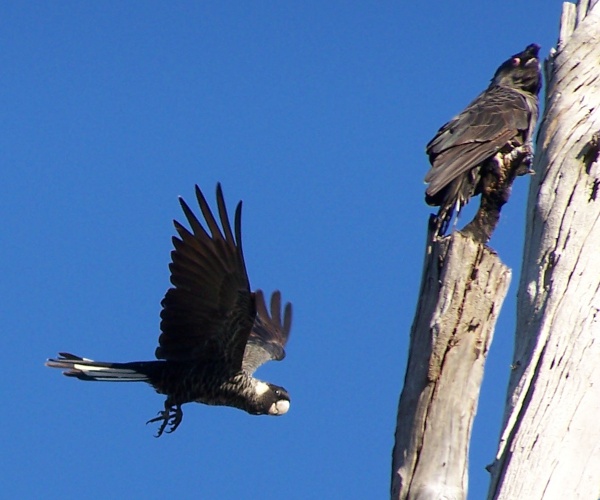Facts About Carnaby's black cockatoo
Carnaby's black cockatoo, also known as the short-billed black cockatoo, is a striking bird native to southwest Australia. First described by naturalist Ivan Carnaby in 1948, these impressive birds measure between 53 and 58 cm in length. They are easily recognizable by their greyish-black feathers, white cheek patches, and distinctive white tail bands. Interestingly, male and female cockatoos can be differentiated by their beak colors and eye-rings.
Regarding breeding, these cockatoos usually lay one or two eggs per clutch. The eggs take about 28 to 29 days to hatch, and the chicks fledge after ten to eleven weeks. The young birds stay with their parents until the next breeding season.
Unfortunately, Carnaby's black cockatoo is an endangered species. The primary reason for their decline is habitat loss due to land clearing and development. Both the Australian government and the International Union for Conservation of Nature (IUCN) have listed them as endangered.
In terms of classification, Carnaby's black cockatoo was once grouped with Baudin's black cockatoo under the name white-tailed black cockatoo. However, they are now considered separate species within the subgenus Zanda. These birds primarily feed on seeds from plants like Banksia and Eucalyptus. They nest in the hollows of large trees, which are increasingly hard to find due to habitat destruction.
The threats facing Carnaby's black cockatoo are numerous, including habitat destruction, competition for nesting sites, and poaching. Conservation efforts are underway to help protect these birds. Initiatives like the Great Cocky Count monitor population numbers, and strategies are being implemented to safeguard their remaining habitats. These efforts are vital, as the species also faces challenges like disease outbreaks, severe weather events, and road hazards.
Carnaby's black cockatoo is protected under the Convention on International Trade in Endangered Species (CITES), which offers legal protection against trade and exploitation. These conservation measures are crucial for ensuring the survival of this beautiful and unique bird.
